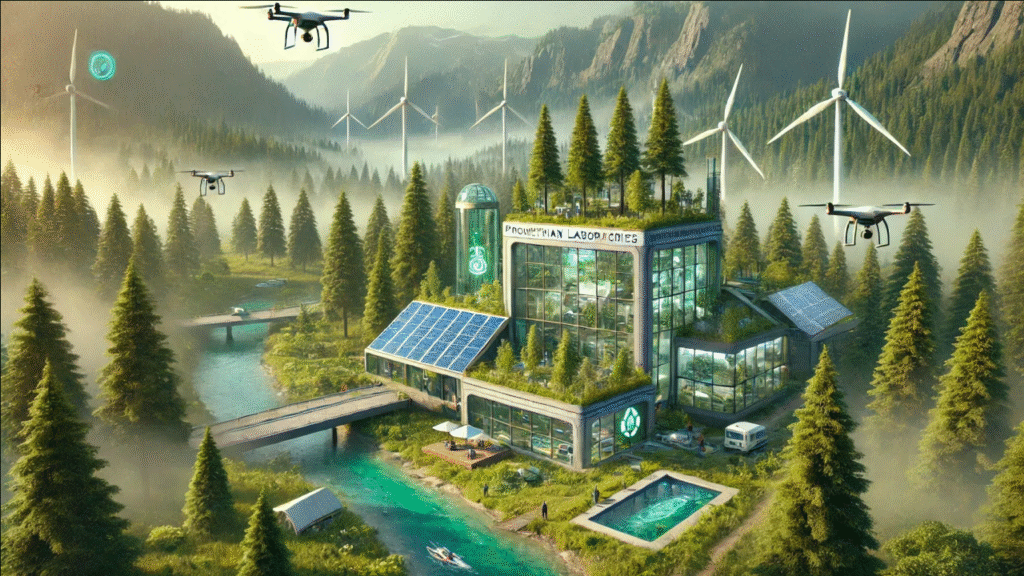In the fast-evolving world of autonomous navigation, remote sensing, and spatial data collection, lidarmos is emerging as a key term among tech innovators, researchers, and businesses. Whether you’re a startup in robotics or a large-scale mapping enterprise, understanding what lidarmos is—and how it can transform your operations—could give you a competitive edge.
But what exactly does lidarmos mean? Is it a new product, a technique, or a coined term for the future of lidar systems? In this article, we’ll break down everything you need to know about lidarmos, its applications, benefits, and why it’s gaining momentum in 2025 and beyond.
What Is Lidarmos?
Lidarmos is a blended term combining LiDAR (Light Detection and Ranging) with “MOS”, which may stand for a variety of things depending on the context—Modular Optical Systems, Mapping Optimization Software, or even Mobile Optical Sensors. While not yet a universally defined acronym, lidarmos refers broadly to next-generation lidar systems that are:
More compact and modular
Enhanced by AI or smart softwar
Designed for mobile or autonomous platforms
Integrated with real-time mapping and analysis tools
In simpler terms, lidarmos systems aim to make lidar more intelligent, scalable, and accessible across industries.
Why Is Lidarmos Trending in 2025?
Several technological and economic factors are pushing lidarmos into the spotlight:
Surging Demand for Smart Lidar
As autonomous vehicles, drones, and robotics enter mainstream industries, the need for lightweight, real-time lidar solutions is exploding. Lidarmos systems are developed with these high-performance applications in mind.
AI and Sensor Fusion
The integration of artificial intelligence and sensor fusion has allowed lidar systems to not only scan environments but interpret them in real time. Lidarmos leads this evolution.
Miniaturization and Cost Efficiency
Older lidar systems were bulky and expensive. Newer lidarmos units are designed to be cost-effective, often with modular add-ons that can scale with use.
Open-Source Hardware and SDKs
Developers and researchers now prefer lidar platforms with open-source software development kits (SDKs). Lidarmos often includes APIs and SDKs for easy integration into custom applications.
Applications of Lidarmos Technology
Lidarmos systems are rapidly being adopted across diverse sectors. Here are some of the top use cases:
1. Autonomous Vehicles
Lidarmos sensors provide 3D perception for self-driving cars, helping them detect obstacles, measure distances, and navigate safely through complex environments.
2. Drones and Aerial Mapping
Lidarmos-equipped UAVs (unmanned aerial vehicles) can perform topographic surveys, create 3D terrain models, and monitor changes in natural landscapes more efficiently than traditional methods.
3. Smart Cities
Urban planners and infrastructure developers use lidarmos-based mapping systems to analyze traffic flow, monitor construction progress, and create digital twins of urban environments.
4. Agriculture
Precision farming now leverages lidarmos to detect crop health, optimize irrigation, and assess terrain for machinery navigation.
5. Forestry and Environmental Monitoring
From canopy analysis to wildlife habitat tracking, lidarmos enables more granular environmental data collection.
Lidarmos vs Traditional LiDAR: What’s the Difference?
| Feature | Traditional LiDAR | Lidarmos |
| Size | Bulky | Compact, modular |
| Cost | High | Lower, scalable pricing |
| Intelligence | Raw data output | Real-time analysis & AI features |
| Integration | Complex | Plug-and-play, API support |
| Use Cases | Limited to research or high-budget projects | Widely accessible to SMEs, startups, and developers |
The key takeaway? Lidarmos improves upon traditional LiDAR by making it smarter, faster, and more adaptable.
Top Features to Look For in Lidarmos Systems
If you’re considering adopting a lidarmos solution for your business or research, here are the features you should look for:
360-Degree Coverage: Enables comprehensive environment scanning.
AI-Powered Object Detection: Real-time object classification and tracking.
Modular Add-Ons: Expand capabilities with plug-in modules like cameras or GPS.
Edge Computing: Onboard processing reduces latency and cloud dependenc
Cloud Sync: Seamless data upload and visualization.
Open SDK: Developer-friendly software integration.
Lidarmos in Industry: Real-World Examples
Logistics & Warehousing: Lidarmos-enabled robots can navigate complex
warehouse layouts and improve operational efficiency.
Construction: Contractors use lidarmos to monitor structural integrity and site
progress.
Public Safety: Search-and-rescue teams deploy lidarmos drones in disaster zones for real-time situational awareness.
Future of Lidarmos: Where Is It Headed?
Experts predict that the global market for advanced lidar solutions—including lidarmos—will grow by over 20% annually through 2030. Trends shaping the future include:
AI-Driven Autonomous Systems
Affordable LiDAR for Consumer Devices
Expanded Use in AR/VR Applications
Integration with IoT Ecosystems
As this technology becomes more refined, expect lidarmos to power not just machines, but entire intelligent environments—from smart factories to next-gen retail spaces.
How to Get Started with Lidarmos
If you’re a developer, startup founder, or enterprise decision-maker, here’s how you can begin exploring lidarmos solutions:
Identify Your Use Case
Start by defining what you need: mapping, obstacle detection, automation, etc.
Evaluate Vendors
Look for lidar manufacturers or startups offering lidarmos-style systems. Compare based on specs, price, SDKs, and reviews.
Request Demos or Trials
Many providers offer pilot programs or evaluation units.
Integrate with Your Platform
Use APIs and open SDKs to connect lidarmos with your apps, robots, or analytics tools.
Train Your Team
Ensure your technical team is familiar with 3D point clouds, AI tools, and real-time data processing.
Conclusion: Why Lidarmos Matters Now
Lidarmos represents the next chapter in lidar innovation. With its blend of intelligent software, compact hardware, and multi-industry applications, it’s setting a new standard for how we interact with 3D environments.
If your business involves mapping, navigation, automation, or data collection, now is the time to explore lidarmos. It’s not just a buzzword—it’s the future of lidar technology.
